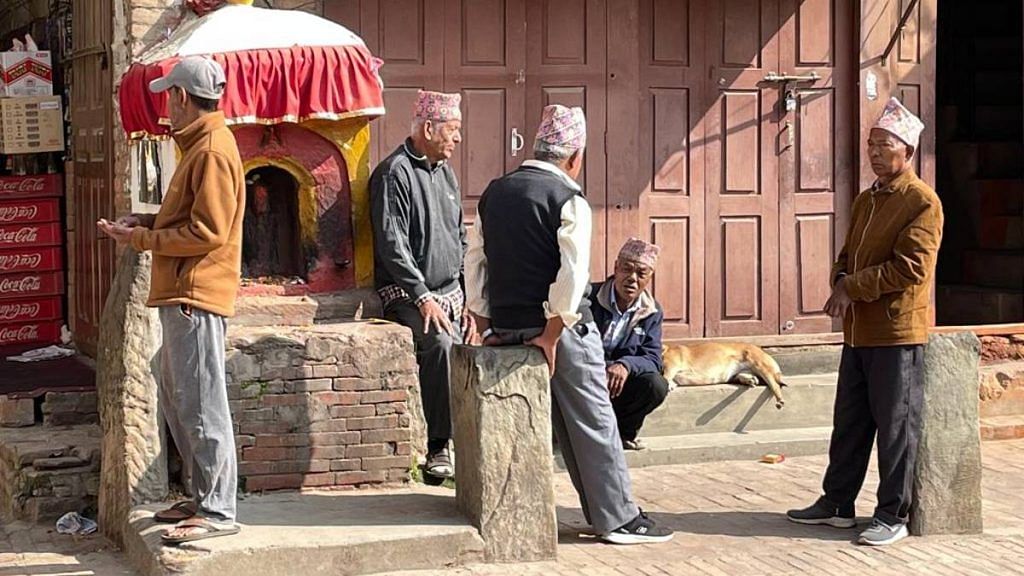The India-China rivalry across South Asia is alive and well. Sri Lanka’s permission for a Chinese research vessel to dock in Hambantota Port in mid-August, just weeks after President Ranil Wickramasinghe turned down the Chinese, is emblematic of the pulls and pressures that Delhi and Beijing applied on Colombo. And now it’s Nepal’s turn.
The just-concluded election in the Himalayan republic, only its second after the Constitution came into being in 2015, witnessed a relatively low turnout, about 61 per cent – far lower than the 78.74 per cent recorded during the second Constituent Assembly election in 2013. The big question on which alliance will win – the Nepali Congress-Maoist Centre group led by Sher Bahadur Deuba and Prachanda, or the Communist Party of Nepal (Unified Marxist–Leninist) led by K.P. Sharma Oli – has been debated from the start of the election campaign.
That is because former prime minister Oli has widely been seen as China’s cat paw in Nepal, while the Nepali Congress, led by Deuba, has traditionally been seen to be close to Delhi. These tropes, of course, change as political conditions change. Barely two years after Oli’s party merged with the Maoist Centre in 2018 to form the National Communist Party (NCP), he turned south again, welcoming India’s external intelligence chief Samant Goel to Kathmandu.
Also read: As public discontent, infighting loom over Nepal polls, the importance of PM’s wife Arzu Rana Deuba
Oli’s about-turns, a key election
This time, Oli began his campaign from Dharchula in the extreme west, close to the triangular swathe of territory that is now part of a dispute with India — across Limpiyadhura, Kalapani and Lipulekh. Certainly, the symbolism is clear. As Prime Minister in 2020, Oli pushed the Nepal Parliament to amend the Constitution and change the national maps by incorporating these territories.
Within a month of that seismic event, he was rubbing salt into India’s irritations, by claiming Lord Ram was Nepali and that Ayodhya was really located in Birgunj, on Nepal’s side of the open India-China border. (The visit by Samant Goel happened three months later, a perfect manifestation of Oli’s political flip-flop.)
If Oli returns to power in this election, result of which is expected by 8 December – the day Himachal Pradesh and Gujarat assembly elections will be declared – it is widely expected he will shift northwards again.
Obviously, things are never that straightforward in international politics. On the eve of the election, the Nepal Army awarded a contract to build a portion of the Kathmandu-Terai Madhesh expressway to a Chinese company, China First Highway Engineering, ignoring India’s Afcons Infrastructure Ltd.
Perhaps the tender of the Chinese company was cheaper, 18.78 billion Nepali rupees compared to 19.99 billion Nepali rupees bid by the Indian company. That will certainly be the argument of the Nepali side, that the contract goes to the cheaper bid – but if Deuba comes back to power, then it is possible that New Delhi will complain, citing security considerations.
Those considerations are certainly valid. The open border between India and Nepal, more than 1,770 km, allows both human traffic and goods to flow back and forth, without the need for a passport or residence certificate. Indians and Nepalis, especially those living in Bihar and Uttar Pradesh, commonly marry into each other’s families.
Also read: In Kathmandu, leaders compete to be ‘different’, make & break ties, as Nepal voters ‘seek change’
Beware, China has entered Nepal
The growing Chinese presence in the Terai region is a ground reality, especially since Oli came to power on a joint Communist platform in the 2017 election. The election itself was won on the back of anti-India sentiment because India had allegedly supported the 2015 blockade by the Madhesis, who were seeking equal rights in the Constitution. Oli turned away from Delhi, towards Beijing. The Terai was now fair game. The Chinese were waiting for an opportunity to step in.
In May this year, a Chinese company built the $76 million airport in Bhairahawa, close to Lumbini, but you can argue that this is not an example of Chinese expansionism because the funder was the Asian Development Bank (ADB) in Thailand – certainly, the Chinese company’s bid would have been the cheapest.
Vijay Kanta Karna, former Nepali diplomat and chairman of the Centre for Social Inclusion and Federalism, told ThePrint that the Chinese are not just looking to unify the Communists again after the election, like they did in 2018, but are “seeking to keep the Americans out”.
The return of the Americans with the $500 million Millennium Challenge Corporation — an infrastructural grant project pending since Oli’s tenure that Deuba cleared in February this year – has been widely criticised by China. Deuba was promptly dubbed by the Chinese media as “pro-India”.
Nepal often describes itself as sandwiched between two big powers, India and China. But with India and the US coming together in the Indo-Pacific, as partners in the Quad, the two countries are also being increasingly perceived in Kathmandu as joining hands to take on Beijing.
That’s why this election in Nepal is being watched so closely. For the sake of Nepal’s own democracy, disillusionment with party-hopping is clear; the turnout is so low. But on the foreign policy lens, as Xi Jinping’s China reiterates its interest in South Asia, Nepal is very much on Beijing’s radar – like it is on India’s. “Who’s winning Nepal,” is a question being asked in several capitals. D-Day on 8 December is the new date to watch out for.
The author is a consulting editor. She tweets @jomalhotra. Views are personal.
(Edited by Prashant)
